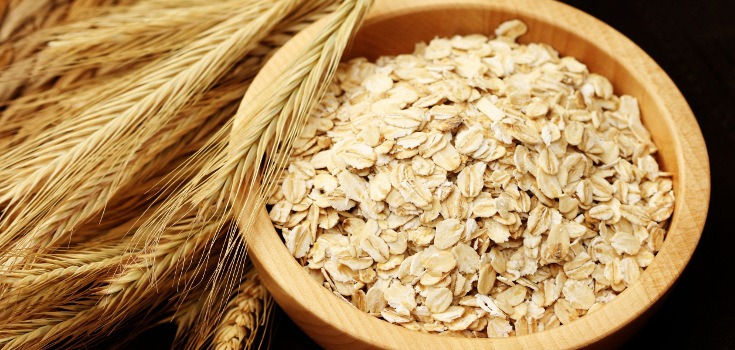By: Prof. R.K. Yadav, (Deptt of Genetics and Plant Breeding C.S. Azad Univ. of Agril. & Tech.,Kanpur/ Executive Editor-ICN Group
KANPUR: Oat (Avena sativa) is an economically important crop and ranks sixth in the world in cereal production following wheat, maize, rice, barley and sorghum. It is an important cereals and known as a dual purpose crop of temperate and subtropical areas. Being a highly nutritious cereal, it is useful for human consumption as well as feed and fodder for milch and drought animals.
In India oat is exclusively grown for fodder in different states viz. Uttar Pradesh, Haryana, Punjab, Madhya Pradesh, Gujarat and some part of Orissa, Bihar and West Bengal. The genus avena belongs to tribe aveneae of family poaceae or grass family with basic chromosome number x=7. Three naturally occurring ploidy levels are known within the genus, diploids (2n=2x=14), all tetraploids (2n=4x=28) and all hexaploid (2n=6x= 42).
Cultivated oat is called as white oat (Avena sativa L.), evolved together with the wild weedy hexaploid species like A. sterilis and A. fatua through repeated cycles of inter-specific hybridization followed by natural chromosomal doubling. It is well established fact that the domesticated oat A. sativa evolved from the wild hexaploid species A. sterilis, which is corroborated by the fact the hybrids between two are fully fertile. The cultivated Oat (Avena sativa L.) is a natural allo-hexaploid (2n=6x=42) with a genomic constitution of AACCDD.
Oats is a cool season crop that requires cool temperatures from germination to grain filling stage for maximum yield. The crop can be grown at temperature varying between 5-30 ºC, however optimum pre-requisite temperature requirement is 25 ºC.
The optimum temperature for growing is to enhance the number of cuts of green forage. Cold temperature requirements had a greater influence on heading date and the duration of the vegetative period than day length. Oats can be best cultivated in well drained rich loams as well as it can tolerate acid soils up to a pH of 4.5 and is also fairly tolerate to salinity .
Under minimum irrigation it gives high fodder yield per unit area and time due to its multicut nature it ensures regular supply of fodder over a long period of time. Because of high quality fodder from multicut line during lean periods and high quality grain cum fodder from dual purpose lines the crop has proved to be outstanding winter forage particularly for the urban / semi urban dairies supplying the big cities. So it may be safe to claim that oat can bring a winter forage green revolution.
With these merits and development of an intensive livestock industry in the country in recent years, it has now gained much importance as a forage crop. The amount of oats used for human consumption has increased because of nutritional attributes especially the dietary fibers benefits associated with phyto-chemicals, such as beta-glucon, present in the grain.
Beta-glucon helps to control blood glucose, cholesterol and an anti-carcinogenic agent, tendency to reduce onset of colorectal cancer, increased stool bulk and migration of constipation for humans.
Beta glucan is an immunomodulator, it binds to surface receptors and thus causes activation of macrophages, white blood corpuscles (WBC), phygocytosis of neutrophil and activation of lymphocytes thus stimulating antitumour and antimicrobial activity.
Beta- glucan’s immune function activate the langerhans cells which induces cytokine, particularly of interleukin-1 and that stimulates the proliferation of fibro blasts (skin cells)and synthesis of collagen, elastin and proteoglycan.
Therefore it is used in cosmetics too because it acts as an anti aging, skin soothing agent, film forming substance, moisturizing and U-VA protectant. Just as we enter our thirties and forties everyone among two is suffering from hypertension, high cholesterol, diabeties and many other disorders.
Having oats, a whole grain food, which is one of the richest dietary sources of the soluble fibre beta glucan as a part of our daily diet can help reduce these disorders as it has various beta-glucan health related benefits. Infact, the health benefits of oat rely mainly on the total dietary fibre and beta glucan content, which lowers blood lipids, especially, serum total and LDL (low density lipoproteins) cholesterol.
Water soluble oat beta glucans exerts their effects by increasing viscosity in the small intestine during digestion, resulting in an extended digestion period. Delayed digestion increases blood sugar slowly, causing a low insulin response which prevents diabetes, cardiovascular disease, metabolic syndrome and obesity.
In view of over increasing human and livestock population together with limited availability of land resources for cultivated fodder has lead the forage breeders to tailor multipurpose varieties, that can fit in different cropping systems. Development of dual purpose forage cum grain types with good grain yield and multicut late flowering types varieties with profuse tillering is required to boost the oat cultivation in the country.



